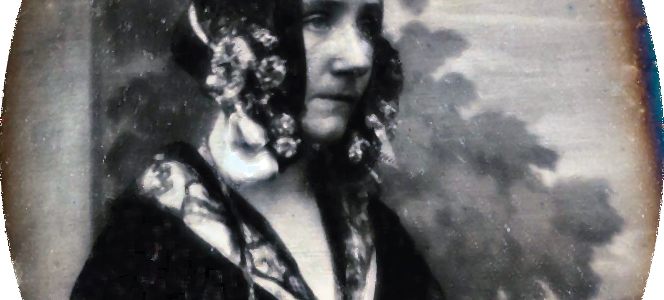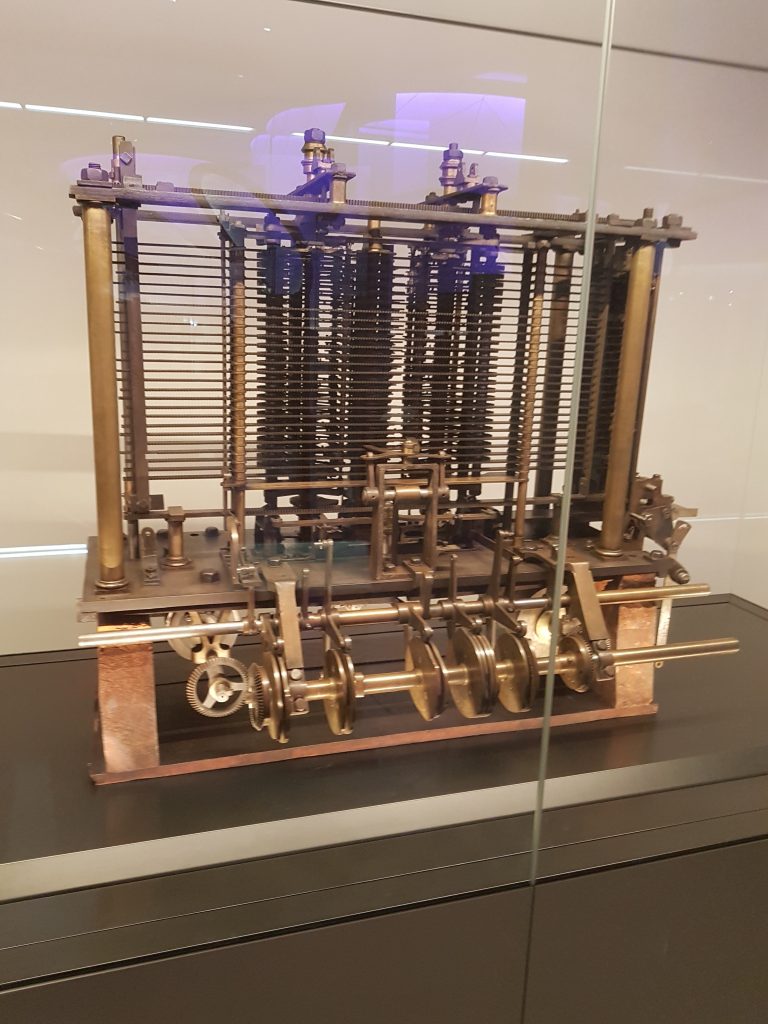August 13, 2020
Ada Lovelace, First Computer Programmer by Saima Baig

By: Saima Baig
Ada Lovelace aka Augusta Ada Byron-1843 or 1850 a rare daguerreotype by Antoine Claudet
Source: Fantastic Women Series – Ada Lovelace, First Computer Programmer | 360 On History
360 On History owner and creator Saima Baig inspires us with the life story of Ada Lovelace, the first computer programmer.
Augusta Ada King, Countess of Lovelace, was born on December 10, 1815. She was the daughter of the famous poet Lord Byron and his wife Anne Isabella Noel Byron. However, being Lord Byron’s only legitimate child is not her claim to fame.
Ada Lovelace was an extremely brilliant woman who excelled in mathematics. Today, she’s widely acknowledged as the first computer programmer.
Ada’s parents separated when she was only five weeks old. Her father didn’t attempt to see his daughter thereafter, and she didn’t have a relationship with him. Nevertheless, she was very conscious of being “Lord Byron’s Daughter.”
Byron died when she was eight-years-old and her mother remained the only influential figure in her life, although their relationship wasn’t good.
Ada was mainly left in her maternal grandmother’s care but her mother encouraged and promoted her curiosity in mathematics and logic, in order to keep her interests as separate from her father’s as possible because she worried about any “moral deviations” she may have inherited from him.
Her childhood was mostly spent alone, with a very rigorous study schedule, as well as exercises in self-control. She learned history, literature, languages, mathematics, geography, art, chemistry, and shorthand.
She also had an ability for abstract thinking, combining poetry and science into what she called “poetical science.”
As a child, though often ill, Ada excelled in mathematics and logic. She developed an interest in invention; even trying to construct wings that would enable her to fly.
To do this, she studied the anatomy of birds and even wrote a book called Flyology, complete with illustrations. She was twelve-years-old.
Ada remained extremely interested in scientific developments throughout her life, particularly in the workings of the brain — this perhaps due to her preoccupation with the “potential madness” that her mother insisted she may have inherited from her father.
One of her tutors, Mary Sommerville, who was also a mathematician and astronomer, introduced her to Charles Babbage in 1833. This was the beginning of a lifelong collaboration, starting when Babbage invited her to see the prototype for his Difference Engine — an automatic mechanical calculator designed to tabulate polynomial functions.
He then went on to design the Analytical Engine in 1937 — a proposed general-purpose computer with a logical structure essentially the same as that of current computer design.
In 1840, Charles Babbage gave a lecture on the Analytical Engine at the University of Turin. Italian engineer and future Italian prime minister Luigi Manabrea transcribed that lecture into Italian.
Ada Lovelace was commissioned by Babbage’s friend to translate this lecture in 1843 and she spent almost a year doing so.
But being Ada she did something more. She added her own more extensive notes to the translation, communicating with Babbage constantly and asking him questions as she progressed.
In one of the notes (Note G), she described an algorithm for the Analytical Engine to compute Bernoulli’s numbers, the first known algorithm specifically tailored for a computer. This is why she’s often called the world’s first computer programmer.
While Babbage thought his engines were bound by numbers, Ada went further. She thought the Engine might act upon entities other than numbers or quantity.
If a machine could manipulate numbers and those numbers could represent other things, such as letters or musical notes, then the machine could manipulate symbols based on certain rules.
In short, she thought that if numbers could represent other symbols, the computer could do anything.
She noted: “Supposing, for instance, that the fundamental relations of pitched sounds in the science of harmony and of musical composition were susceptible of such expression and adaptations, the engine might compose elaborate and scientific pieces of music of any degree of complexity or extent.”
Elaborating on this idea, she emphasized the Analytical Engine’s ability to be programmed to solve complex problems.
Ada Lovelace imagined a machine that would go beyond number-crunching to universal “computing.” Her conceptualization of computer programming anticipated modern computing by nearly 100 years.
Since the analytical engine was never made, her programme was never tested. However, her notes were republished in B.V. Bowden’s “Faster than Thought: A Symposium on Digital Computing Machines” along with Babbage’s design in 1953.
The Analytical Engine is now widely acknowledged as an early model of a computer and her notes as the description of the computer and its software.
Replicas of both of Charles Babbage’s engines are housed at the Science Museum in London, developed based completely on his design.
Charles Babbage’s Difference Engine and Analytical Engine
Source: Fantastic Women Series – Ada Lovelace, First Computer Programmer | 360 On History
Ada married William, Eighth Baron King and became Lady King in 1835. Then, because she was a descendant of the extinct Barons Lovelace, her husband was made Earl of Lovelace for his government work in 1838 — and she became Countess of Lovelace. They had three children together.
Ada also had a love of gambling, for which she formed a syndicate with her male friends. It’s rumored that she lost GBP 3,000 on horses in the 1840s.
In 1951, she attempted to create a mathematical model for large bets, but this failed drastically and she had to admit everything to her husband.
Ada Lovelace died on November 27, 1852, at the age of 38 from uterine cancer. It’s said that she confessed something to her husband on August 30, 1852, which caused him to leave her — no one knows what she told him.
She requested that she be buried next to her father Lord Byron at the Church of St. Mary Magdalene in Hucknall, Nottinghamshire.
Ada Lovelace was forgotten for a long time but in the age of electronic computers, her name has again been at the forefront. She was someone who foresaw what universal computing could be. Now a programming language is called Ada.
Ada Lovelace day, which began in 2009, is celebrated on the second Tuesday of October to raise the profile of women in science, technology, engineering and mathematics (STEM) and to create new role models for girls in these fields. Role models just like Ada King — Countess of Lovelace. Who knows what she might have achieved if she hadn’t died young.
More Fantastic Women: Mary Anning, NASA’s Computers and Cecilia Payne Gaposchkin
Head on over to 360 On History for more enriching articles on history and science!
Be sure to follow 360 On History on Facebook, Twitter, Instagram, Reddit, and YouTube to keep up with their latest content.
Interested in having content featured in an upcoming blog post or issue of The Burgundy Zine? Head on over to the submissions page!
For all other inquiries, please fulfill a contact form.



